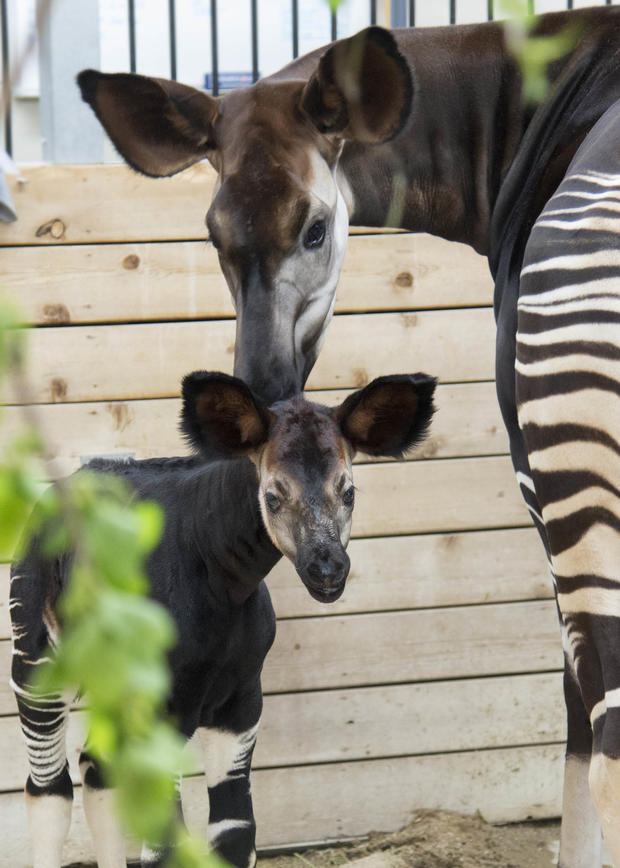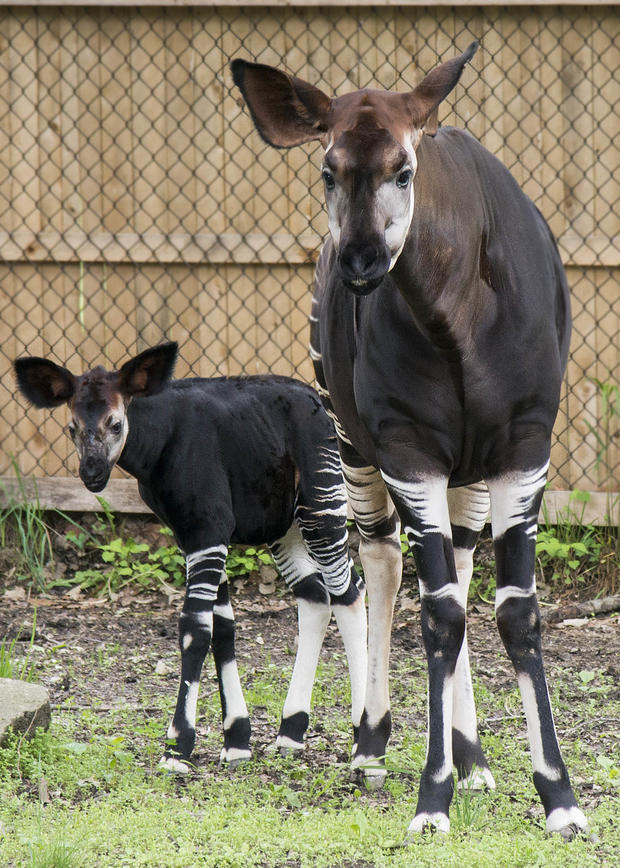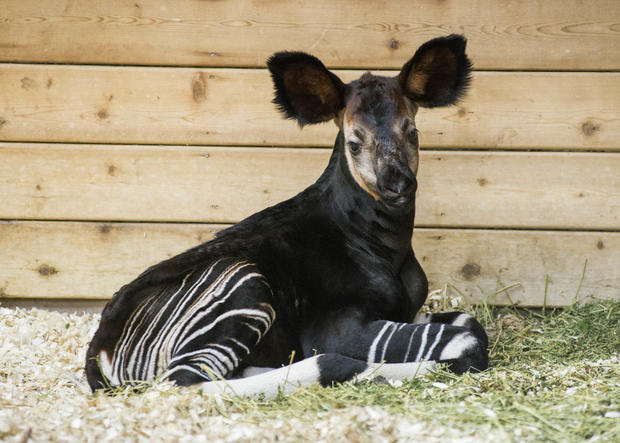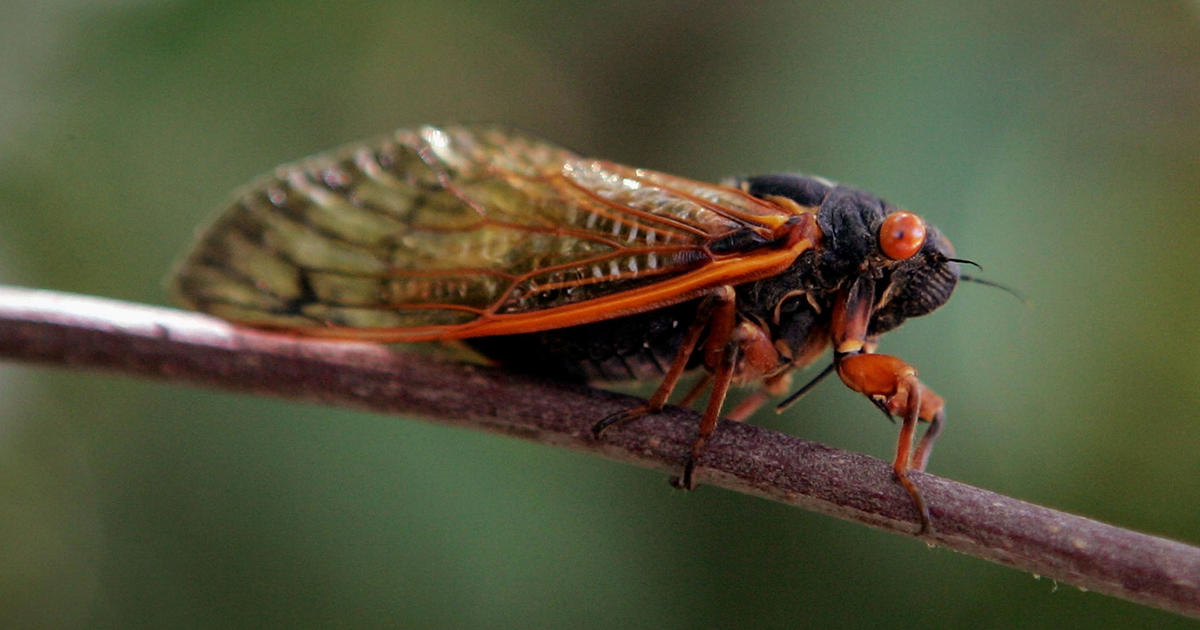Brookfield Zoo Celebrates Its 28th Okapi Birth Since 1959
CHICAGO (CBS) -- It is time for that baby fever!
An okapi calf was born May 16 at Brookfield Zoo.
The male calf is the second offspring for the zoo's 6-year-old female, Augusta K and 21-year-old male Hiari. Augusta's calf in 2015 was also male.
Though the calf has access to his outside exhibit, he is currently spending majority of his time indoors in a nesting area, the zoo said in a statement. But don't worry, zoo-goers can still view a live video feed of the male calf in the zoo's Habitat Africa! The Forest beginning next week. Once the calf is about 3-months old, it is expected to see both the calf and his mother regularly outside in their exhibit.
The new arrival marks the 28th okapi born at Brookfield Zoo, which was the first zoo in North America to have a birth of this species in 1959.
But what is an okapi? It's not part of the zebra family and it is not part of the deer family- actually, the okapi's closest relative is a giraffe.
"Okapi are rare hoofed mammals native to the dense Ituri Forest in the Democratic Republic of the Congo. American and European scientists discovered them in the early 1900s. The species is endangered due to civil unrest in the region, habitat deforestation, and illegal hunting," the zoo said in a statement.
Okapi's are identified by their white stripes on their hind end and front upper legs and white "ankle stocking" on their lower legs.
"The stripes help okapi blend into the shadows of the forest and make them very difficult to see, even when they are only a few feet away. Scientists speculate that okapi's contrasting stripes are important for calf imprinting and act as a signal for a newborn to follow close behind its mother," according to Brookfield Zoo.
"In the wild, an okapi calf spends most of its first two months of life alone and hidden in vegetation to protect it from predators. The mom returns to the nesting site only to nurse her calf. Her nutritiously rich milk helps the young animal double its starting weight of about 60 pounds to nearly 120 pounds within its first month. Calves process their mother's milk very efficiently, and they do not defecate for 30 to 70 days, which makes it difficult for predators to locate them by smell."







